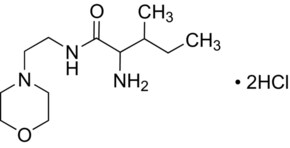An experimental drug that blocks abnormal neural communication after spinal cord injury could one day be the key to improving quality of life by improving bladder function, new research suggests.
Researchers at The Ohio State University tested the drug—which is currently available only for research—to gauge its potential to improve bladder function after spinal cord injury in mice and saw promising results.

The experimental drug (LM11A-31) appears to help by blocking the dual activity of pro-nerve growth factor (proNGF) and a receptor called p75. ProNGF is known to be secreted from the cell after nerve injury.
After a month-long treatment after spinal cord injury in mice, bladder volume decreased significantly to a level close to normal, said lead researcher Sung Ok Yoon, an associate professor of biological chemistry and pharmacology at Ohio State.
The study appears in The Journal of Clinical Investigation.
In humans, spinal cord injuries sever the communication between the bladder and the brain, leading to the loss of the normal ability to urinate at will. This leads to bladder over-filling, which causes high pressure and bladder enlargement due to thickening of the muscular bladder walls. This can cause urine to return to the kidney, which can lead to kidney infection and disease, Yoon said.
People with spinal cord injury typically rely on a catheter to pass urine.
Eventually, Yoon said, a new circuit of nervous-system communication is formed within the spinal cord, and it allows urine to be expelled unexpectedly, causing incontinence.
"There are no approved medications to treat bladder dysfunction brought on by spinal cord injuries, something that is a major concern and diminishes quality of life for these patients," Yoon said."This drug appears to help maintain near-normal bladder pressure and less unexpected expulsion of urine in mice."
Because the experimental drug does not restore normal communication between the bladder and the brain, it is certainly not a cure, Yoon said. Based on the mouse study, however, patients are likely to experience reduced bladder volume, which would lower the risk of bladder infection and reflux to the kidney, and less incontinence.
"The structure as well as the integrity of the neural communication in the bladder is expected to improve as well, contributing to the overall health of the bladder," she said.
Yoon and her collaborators also confirmed—through samples from two recent spinal-cord injury patients—the presence of proNGF in the urine within hours after injury. Urine from healthy people does not contain the growth factor. Yoon said that since the drug counteracts proNGF action, these findings could potentially be extended to further research into other types of bladder dysfunction besides spinal cord injury.
https://www.jci.org/articles/view/97837
https://www.jci.org/articles/view/97837
Ref : https://www.jci.org/

No comments:
Post a Comment